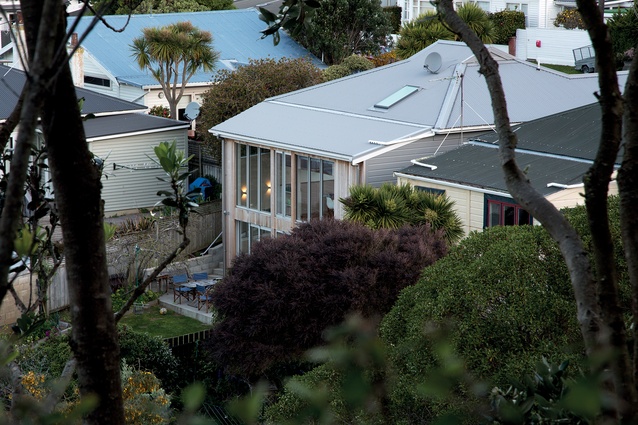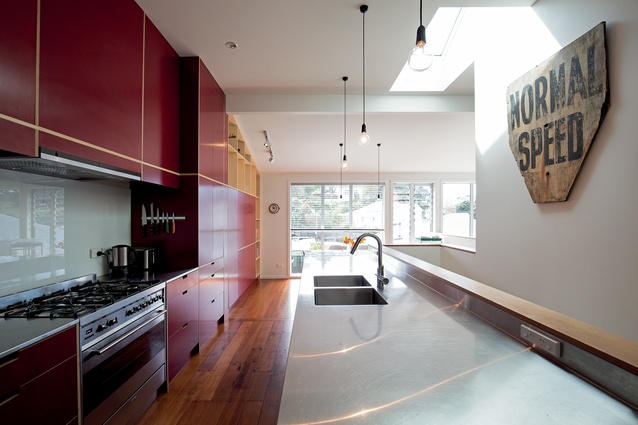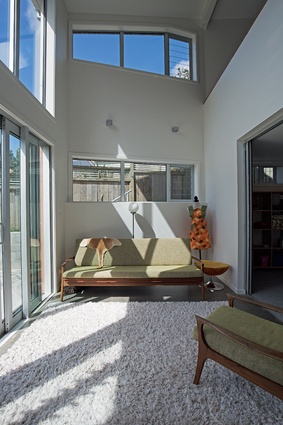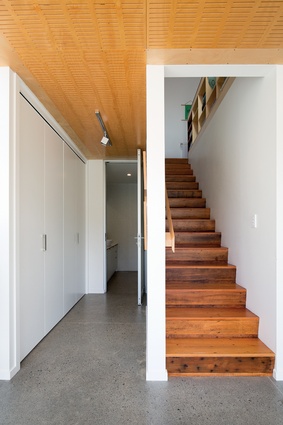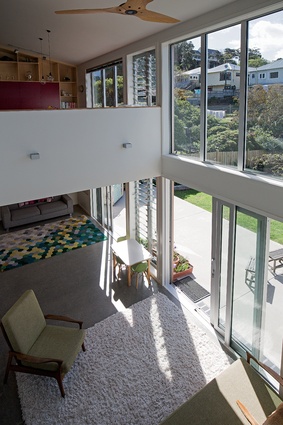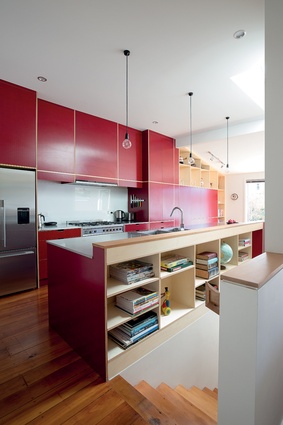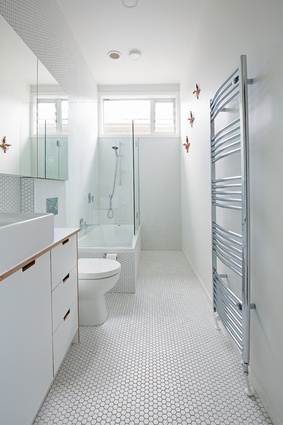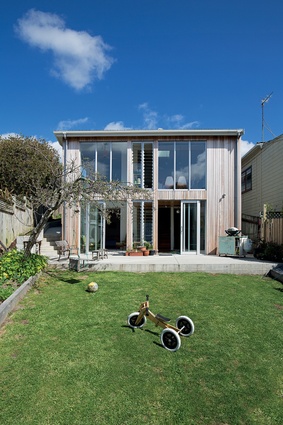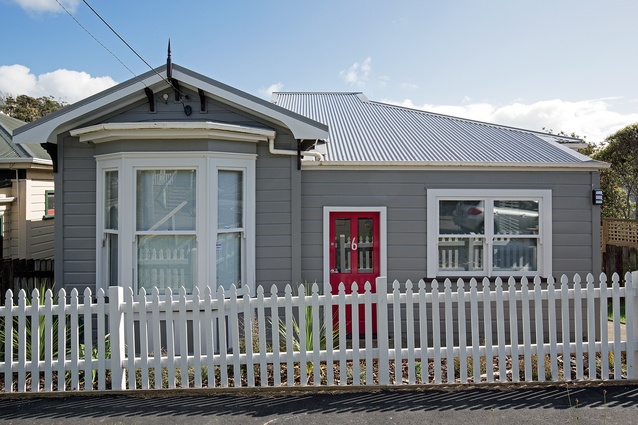Existing traces: Baird House
On a wide dead-end street in the community of Island Bay, a modest Victorian-style worker’s cottage has been transformed into a spacious modern home that still retains the character of the original building.
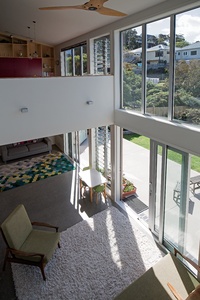
“This was a small, dark cottage,” explains Cecile Bonnifait of Bonnifait + Giesen Atelierworkshop Architects, “but it’s super charming, so we didn’t want to compromise the scale too much. We were lucky to have a dropping-down of the land to enable us to squeeze a lot of architecture into the space – although, being in the Island Bay suburb, we couldn’t do too much; we needed to keep everything under control.”
The house was built at the turn of the last century and, at some point – probably in the 1970s – the cottage’s original front porch had been enclosed, turning it into a sunroom. “We kept it,” explains Bonnifait, because “there was no point in reinstating something that has been enclosed for so long and because of the orientation facing south, there was a need for some protection too.” They also left the entrance corridor, which has a view straight through to the garden.
The practice normally approaches a design by “looking at the traces” that already exist in the building and its context. The original staircase was falling apart so they removed it but used the matai timber flooring, which is carried through into a new addition using reclaimed matai. The addition extends out of the original cottage by about 3.5m; they kept the old bathroom but eliminated a bedroom and kitchen to make room for the new layout.
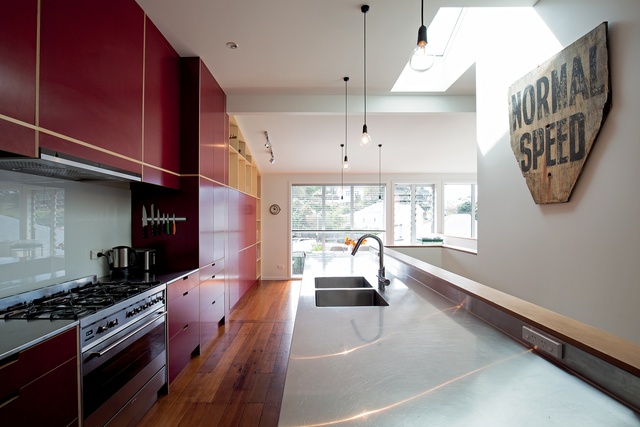
“We wanted a vision through to the garden, so we squeezed the open staircase in beside the kitchen. This way the dining room would sit in a prime spot with lovely sun and views overlooking the garden, the valley and the neighbouring lights at night. That meant we could keep the living room basically where it was.”
Oriented full north, with full-height windows and a very open spatial arrangement, the house is very light and airy and utilises passive heat gain, keeping the temperature comfortable.
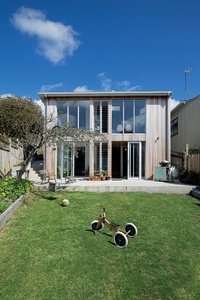
The real challenge of the cottage was how to make it work both for the parents and the kids – a doctor couple and their three daughters. The architects came up with a simple but efficient layout, which enables all of the family to communicate from every point in the space.
“We created a void for the parents to communicate from downstairs with the girls in the secondary lounge above, where they can watch TV and movies and it’s really nice and sunny,” explains Bonnifait. “Also, we inserted acoustics in the ceiling to reduce any transference of noise and the space works beautifully – it’s great for parties.”
The bold red kitchen and upstairs storage wall are real highlights of the design, also. Atelierworkshop is a fan of plywood – for the coloured versions in particular, which have colour actually embedded in the fibre of the wood. These architects have managed to fit many architectural highlights into a small and simple cottage.
MATERIAL SELECTOR
Architects Cecile Bonnifait and William Giesen explain their choice of cladding.
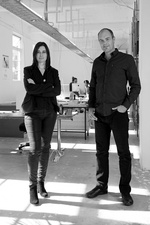
You typically use New Zealand’s native macrocarpa timber or imported cedar or redwood for the cladding on your designs; how do they compare?
Macrocarpa is local, an environmentally-conscious material and it’s cost effective. We also use imported cedar and redwood, which are imported timbers but are more stable over a longer time period and are, therefore, suited to different applications.
If macrocarpa isn’t as robust over time, what advice would you give to anyone looking to install it as cladding?
Macrocarpa is a softer wood than cedar, for example, so, to avoid the timber splitting during changing weather [when wood is inclined to expand and contract], we recommend that you ask the builder to find a good-quality source of timber that is free from knots. As a cladding, we generally use macrocarpa for screening and decorative elements, as well as for rainscreens over plywood walls, while cedar can be used as vertical weatherboard.
How should these timbers be maintained for longevity?
We usually do not give any treatment but, rather, allow them to grey off naturally. The greying of macrocarpa is one of its best features; however, we have also used various stains and oils.

